Seat belts reduce serious crash-related injuries and deaths by about half, according to the National Highway Traffic Safety Administration. The simple act of wearing a seat belt is the single most effective way to reduce the risk of fatality in a crash. So why do millions of people not buckle up on every trip? Let’s debunk five common myths about wearing seat belts that are outdated or just plain wrong.
5 Common Misconceptions About Seatbelts
#1: Seat belts are uncomfortable and restrict my movement.
Wearing a seat belt should not cause any discomfort or pressure when adjusted properly. Seat belts have come a long way in the comfort department since becoming a mandatory feature in cars in the 1960s. Technological advancements like polyester webbing and pretensioners, which eliminate slack in the event of a crash, have made seat belts more comfortable for the wearer. If you want to customize your fit, you can find clips and extenders at your local dealer or auto parts store.
With children, the shoulder belt should fit across the shoulder and chest, and the vehicle lap belt should fit across the upper thighs. (Children are typically between the ages of 8 and 12 years old when they are ready for a seat belt. A good test is if their knees bend at the edge of the seat when backs and bottoms are pressed against the vehicle seat back.)
Pregnant women should wear both the lap belt and the shoulder strap, ensuring a snug fit. Lap belts should be buckled under the belly and over hips. Never place the lap belt across your belly. The shoulder strap should go between the breasts and off to the side of the belly. Never place the shoulder strap under the arm.
#2: Seat belts trap you in your vehicle during a crash.
This myth is often associated with fire- and water-related accidents, which account for less than one-half of one percent of all crashes. More importantly, seat belts can actually prevent you from being knocked unconscious, which can increase your chances of escaping during an accident.
#3: I’m just going up the block for groceries. I don’t need to wear a seat belt around town.
Think again. Routine, seemingly low-key trips can be deceptively dangerous. Did you know that most traffic-related deaths happen within 25 miles from your house and at speeds less than 40 mph, according to the National Highway Traffic Safety Administration? Don’t take any chances. Your life and the lives of your passengers are at stake.
#4: I don’t have time to put on my seat belt.
It only takes about three seconds to strap on your seat belt. That’s less time than it takes to tie your shoe. Even if you’re buckling up 20 times a day, that’s only one minute of your day.
#5: My car has air bags, so I don’t need to wear a seat belt.
Air bags are designed to protect a buckled passenger, not an unbuckled one. Seat belts secure you in the proper position to benefit from an air bag deployment. If you’re not wearing your seat belt, you’re in danger of sliding underneath the air bag, colliding with the dashboard or windshield, or being ejected from the front seat. Air bags are a supplemental form of protection and most are designed to deploy in moderate-to-severe frontal crashes, which doesn’t cover all situations. Using air bags in conjunction with seat belts is your best bet.
The History Of Seatbelts
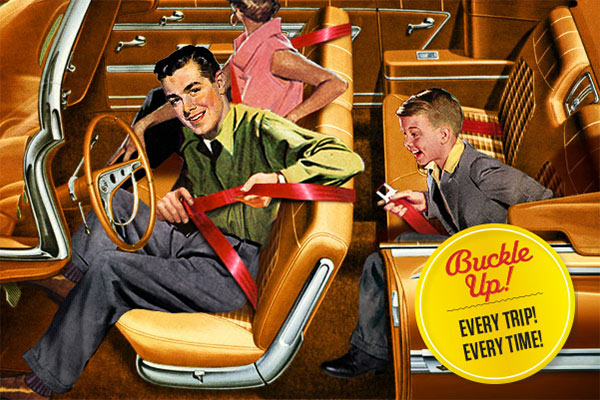 Forget statistics, campaigns or pleas from car manufacturers. As the history of the seatbelt shows, the most effective way to get drivers and passengers to buckle up is to hit them where it hurts: in their wallets.
Forget statistics, campaigns or pleas from car manufacturers. As the history of the seatbelt shows, the most effective way to get drivers and passengers to buckle up is to hit them where it hurts: in their wallets.
Although lap belts were offered in cars as early as the 1950s, they were snubbed by many until 1984, when New York became the first state to crack down on car safety. “The thing that started to get people to buckle up in large numbers was simply having state laws with a minimal fine of $25 or $50 for not buckling up,” says Mike Ciccone, senior director of crashworthiness evaluations at Insurance Institute for Highway Safety (IIHS).
The importance of using seatbelts is no joke. No other quick daily habit—not even eating your veggies—has such life-changing benefits. “Lap and shoulder belts are about
50 percent effective in preventing fatal injuries to front‐seat occupants in crashes of all kinds,” says Ciccone. The numbers are staggering: Safety belts saved 12,802 lives in 2014, according to the National Highway Traffic Safety Administration (NHTSA). Compare that with the early 1980s, when just roughly 11 percent of front-seat passengers wore belts. So when did people buckle down on buckling up? Here, a look back at the invention, technology and laws behind seatbelts.
1885: The U.S. Patent Office issues the first seatbelt patent.
1949-50: Nash Motors Company offers lap belts in certain car models.
1959: Volvo engineer Nils Bohlin invents the first three-point safety belt in Sweden by combining the lap belt and shoulder strap into one continuous belt that could be buckled with one hand. The invention’s open patent allows other manufacturers to adopt the game-changing design.
1968: The first federal law regarding seatbelts—called the Federal Motor Vehicle Safety Standards—is passed, requiring all new cars sold in the U.S. to feature lap or shoulder belts in the front seats and lap belts in the back seats.
1984: New York passes the first “primary enforcement law,” in which a police officer can pull over and ticket a driver just for not wearing a seatbelt. Thirty-four states now have primary enforcement laws, while 15 states have secondary laws, which means drivers pulled over for another reason can receive a ticket for not wearing a seatbelt. The fear of getting ticketed led to a quick jump in seatbelt usage for those states, which meant fewer deaths and injuries. People pay more attention to primary laws, and buckle up more. According to IIHS, if all states with secondary laws had primary laws instead, their passenger deaths would decrease by 7 percent.
1993: North Carolina’s “Click It or Ticket” campaign, which involved TV ads and billboards highlighting the cost of getting pulled over, dramatically increases seatbelt use from
65 percent to 81 percent. A decade later, the “Click It or Ticket” campaign goes national.
2015: States with primary enforcement laws report seatbelt usage at 91 percent, and states with secondary enforcement laws (or no law at all) report seatbelt usage at 79 percent.
Living in such a rapidly changing world, it’s easy to take innovations for granted, but remember that seatbelts were designed with one goal in mind: to protect you. Don’t forget to buckle up on your next ride—and that goes for everyone, especially kids and even pets.
You always buckle up … right? Good. GEICO offers discounts to good drivers. See how much you could save.
Next article: 5 Common Driving Myths Debunked
By Stephanie Levis and Kara Cutruzzula



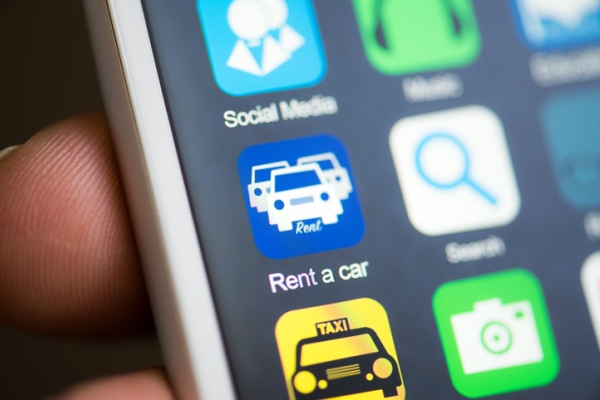
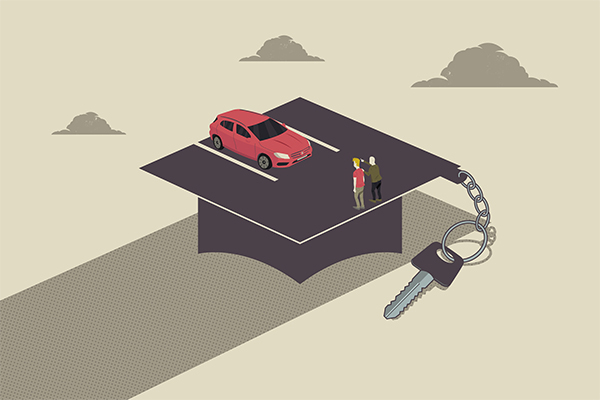
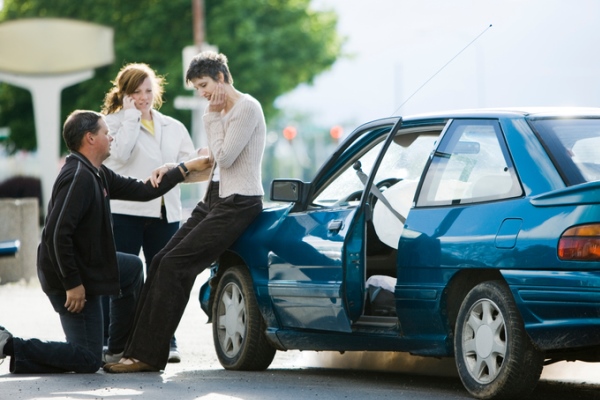
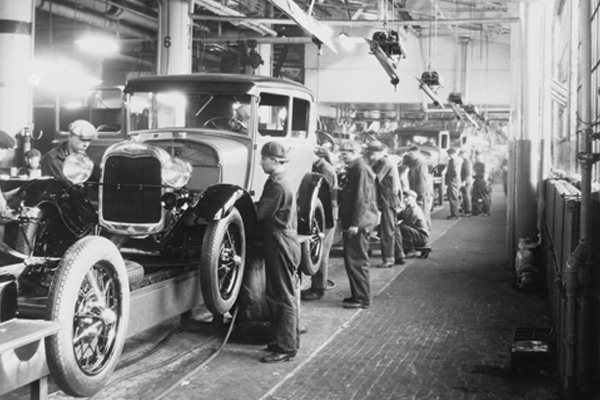

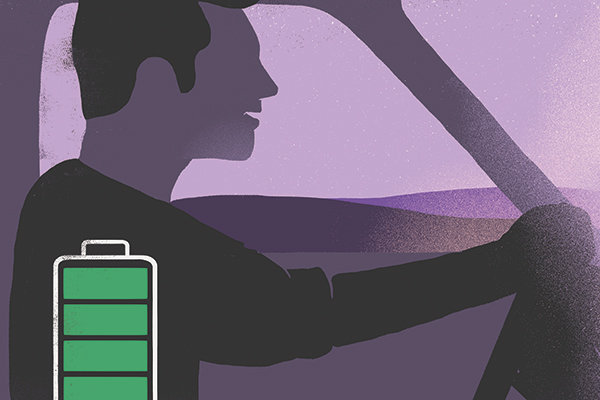
Alan says,
The USA use to be a Free Choice Country for 100s of Years tell about 1980 or So.. Fought Communizime since the Early 1900s and the time before that and now We are in that Stage Ourself.. Told to do This and That or be Find or go to Jail,,Helmets,Seatbelts ,Baby Seats, What happened to Freedom of Choice in this Country ? Pass Laws to Make Money for Manufactories of New Items made. .We need to go back to the years that worked in the Mid 1900s,,when We were a Strong Country that were for the People and Their Rights and Freedom of Choice, ,NOT Forced to do things that May or Not be Right and Told to do it..
Catherine N Smith says,
Think before you comment – cars have increased over many years – speed has increased…..I know of three people who lost their lives- not wearing seatbelts…
Richard DePasquale says,
Rights also require responsibilities. If people don’t want to wear belts, then they should pay higher premiums to cover the cost of more severe injuries incurred by lack of seat belt use. The same can be said for other areas and in some cases this is true. Smokers and the obese should and do pay higher premiums for life insurance. Those who make responsible health choices should not have to bear the costs of those who do not.
kevin says,
You have a number statistic for 2014 and a percentage statistic for 1980. I’m not sure that the number statistic doesn’t equal the same or even less percentage since there are so many more drivers than in 1980.
Eric says,
I like how this article contains exactly zero reasons why you should wear a seatbelt. Thanks for wasting my time.
PETER HOWARD says,
LOVE YOUR COMMENT SAVE LIFE NEVER KNOW WHAT GOING HAPPEN WHEN YOU ARE DRIVING :::::::
Frank Baltra says,
After all of that, can Geico tell me why in one year, 56% o0f all police fatalities where from the lack of a seat belt. Not getting shot, but they don’t wear them, which shows me that they still think they are above the law.
Frank Baltra says,
Plus the stats say differently, If you are in a accident and your wearing your seat belt, the chances are grater that you will be maimed for life.
James says,
It blows my mind that school buses do not have seat belts and the children are not required to wear them.. If they are in my car they have to go in a special safety SEAT, not even just a seat belt, but if they are on the bus they don’t have anything, not even a lap belt!!! NUTS
Charlotte Norton says,
There wouldn’t be accidents in the first place if people PAID ATTENTION to their driving. Instead, they are talking on their cell, putting on makeup or reading a book when they should be focused not only on their driving, but watching out for other self-absorbed drivers. I am a retired professor of 40 years and approaching 70 in January. I have not had an accident or ticket in 48 years because I watch out to see what other distracted drivers do BEFORE making my move. Also, some manners on the road would help like moving over in another lane when you see another motorist trying to merge instead of speeding up so they can’t get in. Also, if one is merging, there is usually a transition lane straight ahead; one doesn’t have to wait to go over to the far left lane immediately. They can transition to that lane after they merge to keep the merge lane moving. Furthermore, don’t begin to merge and then stop causing those not paying attention to your indecision to hit your car. Also, when turning, use your signal far enough in advance to let others know your intention and make sure the flasher is correct whether you are turning right or left. If people would pay attention and show some driving manners, there would be far fewer accidents. However, seat belts do save you from other distracted drivers either going to slow or too fast for conditions. Now that I’m retired, I have the luxury of driving off peak hours like 10 in the morning, 2 in the afternoon or even 3 am when less folks are on the road. When people are stressed, in a hurry, angry or just thoughtless/careless, they themselves are an accident waiting to happen. Tip: avoid them whenever possible or just let them have the lane they think they own. Your life IS worth it!!
sherri l sevco says,
I was in a very bad accident many years ago, when I hit black ice! I lost full control of my car, and ran into a ditch, and sheared off a telephone pole!!
My 3 yr. old son and I were left alright. I had to go to the Hospital for a broken finger. My Doctor said if I weren’t wearing my seat belt, I would have been DEAD!
I wear my seat beat!
Polly says,
I can’t understand those who would prefer not to use the seatbelts provided in cars. They are such obvious avenues for safety–preventing injury and saving lives. The only exception I can see is if people have handicaps of such a nature that another provision for safety may be more appropriate.
Moulton Avery says,
If we’re going to take a walk down memory lane, I believe it’s worth noting the US car companies bitterly opposed seat belts until they were forced, by legislation, to install them. I’ve worn my seat belt and required passengers in my car to do so since the mid-1960’s. They have saved me from serious injury or death many times.
Marlene Stanford says,
Seat belts became law when my 40 year old son was a baby. I think seat belts should be required by law, if only for the protection of children. I am SHOCKED when I still see children still today riding in cars with no seat belt. Some are standing in the back seat area; some have even been in the front area of the car. Several years ago, one child (who may be in high school by now) asked if she could ride with me in the front seat “because my grandmother lets me.” This involved a church outing. The children & their chaperones rode in the church’s van to the zoo. The van had NO seat belts, so I drove so that my granddaughter & anyone who rode in my car would have seat belt protection. The outing required freeway driving. My granddaughter was in the back seat of my car along with the other children who could fit. I refused to let the child who asked sit in front, but I didn’t say anything to the grandmother. I don’t care to confront people even though I knew the possibility of danger. To me, this was that child’s grandmother’s decision. I believe that if seat belts were made law, MAYBE people (at least children) would be protected while riding in cars. People need to know that an accident is something that no one THOUGHT would happen. I won’t leave my family’s safety to “fate.”
Bill Bouck says,
I realize that seat belts save lives but i don’t agree with the government in blackmailing states to enforce this law by threatening to take away highway funds if they don’t comply. i don’t think we need a law to protect ourselves from ourselves, it should be ones choice! This only opens the door for the feds to take more control over our states. I have no problem with withdrawing from the union and paying my federal taxes to my own state. I think wearing seat belts at a slower speed as in town shouldn’t make as much a difference than going at a higher speed. My state voted down this seat belt law because no one wanted it, but until the feds blackmail it wasn’t enforce. Whats next ,making seat belts mandatory for motorcycles, just as ridiculous. Drivers that wore seat belts have had back & permanent spine injuries due to the restraint. Again, i think the belts do save lives but still should be a personal choice!
James Carpenter says,
Buckle up. I was involved in a head on collision at a speed of 45 miles per hour. The other
car was on the wrong side of road. I feel to this day that if I had not been wearing a seat belt
the out come would have been different. Fortunately both vehicles had air bags and seat belts that worked as they are designed. With that said still spent one night in hospital.
P says,
Driving is a “privilege”. You should have the right to buckle or not to buckle. If your an adult, your safety is primarily your responsibility.
Forcing laws that do not directly protect the well being of OTHERS is very dangerous and will lead to other intrusive unconstitutional laws.
Freedom aint free
Riley Wallach says,
You could have made a much better case that would force numbskulls who don’t to actually wear their belts. For example, without a seatbelt, the air bag could kill or paralyze you with a broken spine! Without a seatbelt, you could wind up like the husband and wife in front of my family’s car on the highway before the seatbelt era: husband crushed to death by the steering wheel, and my father spending half-hour on the side of the road removing glass from the wife’s face and head while she was screaming in pain waiting for the ambulance. Really, anyone who wants to bounce around a car’s hard interior while it decelerates from 60 to zero instantly should be barred from having children or being allowed to marry anyone who does wear their belts, because the head injury/ paralysis/ death from not wearing one is unfair to anyone who does.
The constitutional argument by Alan Wachs might be theoretically supportable in some kind of idealized America that was not part of the real wold, but in the actual real world of constitutional jurisprudence states can force citizens to do something for the public benefit when that public benefit is significant. If Mr. Wachs self-insured or paid quadruple rates for the privilege of not wearing his seat belt, and could prove he and the million others getting killed and leaving dependents or getting hospitalized for months or for life did not actually impact the rest of us in economic loss, then he might have a successful case.